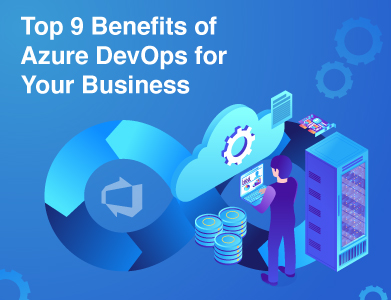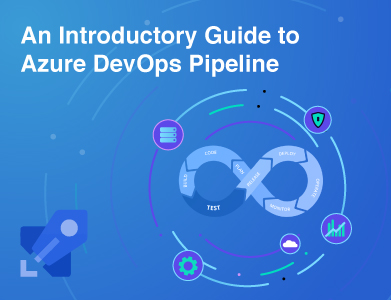Benefits & Use Cases of Predictive Analytics in Insurance in 2025
 Admin
Admin Insurtech
Insurtech Dec 02, 2024
Dec 02, 2024

Table of Content
If you’re like most insurers, you’re probably juggling a million things at once—underwriting, claims, customer satisfaction, fraud detection, you name it. The insurance game isn’t getting any easier. Plus, the customers expect faster claims, personalized policies, and a lot less paperwork. Meanwhile, fraud is lurking behind the scenes, threatening your margins.
With all these pressures, how can an insurer keep up?
The answer? Predictive analytics. It can transform the way you do business, making you smarter, faster, and more customer-focused. By reading this post, you’re going to learn what predictive analytics means for insurers, how it can improve everything from pricing to fraud prevention, and what kind of returns you can expect.
What is Predictive Analytic?
Predictive Analysis means using data to predict future outcomes. Instead of just guessing or relying on outdated methods, predictive analytics uses past data and machine learning to forecast what might happen next. This means better pricing, faster underwriting, fewer fraudulent claims, and even happier customers.
Predictive analytics is here, and it's already revolutionizing industries like healthcare, finance, and, yes, insurance. In fact, the global insurance analytics market is growing at a 15.1% annually, projected to hit $20.6 billion by 2026.
Let’s see how it works in practice.
How Does Predictive Analytics Work?
- Define the Problem What's the goal? Is it reducing claims processing times? Spotting fraud before it happens? Step one is always knowing what you’re trying to achieve.
- Gather Data Predictive analytics feeds on data—lots of it. You need information from customer interactions, IoT sensors, historical claims, and even social media. Everything counts.
- Clean Up the Data Messy data leads to bad predictions. Cleaning and organizing your data are like prepping ingredients for a gourmet meal.
- Build Predictive Models Machine learning algorithms dig into your cleaned data, looking for patterns you wouldn’t see otherwise.
- Test the Model Before letting it loose, you test these models to see how well they work.
- Deploy and Monitor Once you’re confident, you set it live, but you need to keep an eye on it to make sure it’s working as planned. It’s an ongoing process of tweaking and perfecting.
Key Use Cases: Making Predictive Analytics Work for You
So, how exactly can predictive analytics turn your finance & insurance operations from “just getting by” to “next-level efficient”? Let’s break it down by diving into the specific ways it can help you right now.
1. Risk Assessment and Underwriting: Cutting Out the Guesswork
Underwriting is a balancing act between charging the right premium and understanding the customer’s true level of risk. Traditionally, underwriting relied on historical records and a handful of broad metrics like age and occupation. But predictive analytics takes this a giant leap forward.
By combining behavioral data, demographic details, and third-party information, predictive models can provide a risk score that’s highly individualized. In health insurance, for instance, predictive analytics doesn’t just look at age and gender—it also evaluates lifestyle habits, medical history, and even social determinants of health.
With predictive AI insurance underwriting, you’re more precise. You’re not overcharging or undercharging—you’re hitting the sweet spot. This means happier customers and better margins. And for competitive markets, like motor insurance in the U.K., this precision was a key factor in achieving underwriting profits for the first time in 21 years.
2. Faster, Smarter Claims Management: Make Customers Love You
Claims management is often the make-or-break moment for customers. They’re in a vulnerable spot, and they need you to step up. Predictive analytics can help you do just that.
Predictive tools, especially through First Notification of Loss (FNOL) systems, can assess claims in real-time—evaluating severity, costs, and even the likelihood of fraud. Claims can be sorted based on their complexity: the simpler ones are handled automatically, while complex cases go straight to the most experienced adjusters.
Imagine being able to tell a customer, “We’ve already assigned an adjuster who specializes in your kind of claim, and you should expect to hear from them within a day.” That’s powerful.
Predictive analytics has reduced average claim processing times by as much as 30% in some cases. For insurers that implemented predictive FNOL systems, the savings went beyond money—they saw a 15% boost in customer satisfaction just by being faster and more transparent.
3. Fraud Detection: Save Big by Stopping Fraud in Its Tracks
Insurance fraud is a monster hiding under the industry’s bed. The numbers are huge. Fraudulent claims are estimated to cost the U.S. insurance industry roughly $80 billion each year. Predictive analytics is a weapon you can use to fight back.
Using anomaly detection, machine learning can compare new claims against patterns from known fraud cases. It’s like having a supercharged detective that’s always watching. Predictive models don’t just spot obvious red flags; they catch subtle patterns that manual reviews might miss.
According to reports, insurers that use predictive models flagged fraudulent claims 20% more effectively than those relying solely on traditional methods, saving millions of dollars in prevented payouts.
4. Dynamic Pricing: Stay Ahead of the Curve with Personalized Premiums
You know what customers love? Feeling like they’re getting a fair deal. Predictive analytics lets you price policies dynamically—taking into account everything from market demand to individual risk profiles. With usage-based insurance (UBI), customers can pay based on actual driving behavior captured via telematics. If someone drives safely, they’ll see lower premiums, which not only encourages better driving habits but also helps you keep customers.
Pricing that aligns with risk is the ultimate win-win. Your customers save money, and you cut down your exposure to high-risk behaviors without driving away good drivers. Plus, predictive pricing models have proven to help insurers compete more effectively in markets with tight profit margins.
5. Personalized Customer Experience: It’s Time to Get Real
Gone are the days of the "one-size-fits-all" insurance policy. Predictive analytics allows insurers to personalize everything from marketing campaigns to customer interactions.
Imagine a system that could analyze social media posts, email responses, and app usage patterns to figure out if a customer might be dissatisfied and at risk of switching to a competitor. With predictive analytics, you can catch these signals early and offer something tailored—like a personalized renewal offer or a premium reduction.
A large European insurer used predictive analytics to spot churn risks and saw a reduction in customer turnover by 30%. It's all about making people feel understood and valued.
6. Proactive Risk Management: Always Stay a Step Ahead
It’s not just about managing what’s happening now, it’s about predicting what could happen tomorrow. Predictive analytics can help insurers foresee the impact of external factors like climate change or shifts in economic conditions on their portfolios.
For instance, insurers dealing with property and casualty can combine weather data and historical claims to predict when and where catastrophic events might cause losses. Knowing this means insurers can adjust policies, recommend preventative measures to customers, or adapt pricing accordingly.
Companies that adopted predictive risk modeling reported a 20% reduction in claims related to extreme weather events, simply because they could prepare their customers in advance.
7. Usage-Based Insurance (UBI): Drive Smarter, Pay Smarter
Telematics and IoT devices have opened a new chapter in insurance—usage-based insurance (UBI). Through these technologies, predictive analytics adjusts premiums in real-time, based on how customers behave. For car insurers, this means analyzing driving habits—are they speeding? Hard-braking? Where do they drive, and at what times?
Safe drivers get rewarded with lower premiums, while riskier behaviors trigger higher rates. This personalization not only makes pricing fairer but also fosters safer driving habits. Plus, with real-time data, insurers can keep adjusting to changes in driver behaviors, keeping a perfect alignment of risk and premium.
Breaking Down the Benefits
Predictive analytics brings a ton of benefits for insurers and customers alike:
- Fraud Reduction Advanced fraud detection algorithms cut down fraud by up to 20%, saving insurers millions.
- Efficiency Boost Claims automation and predictive underwriting cut manual work, helping you scale without adding tons of overhead.
- Customer Retention Personalized offers and dynamic pricing improve customer satisfaction, driving loyalty.
- Cost Optimization Automated claims processing slashes operational costs, while better risk assessment prevents overpricing and underpricing.
- Competitive Edge UBI and dynamic pricing give you a market advantage, particularly in competitive markets where cost matters.
Challenges You’ll Face (and How to Handle Them)
- Legacy Systems Many insurers have legacy IT systems that just aren’t cut out for modern analytics tools. Integrating these can be like trying to fit a square peg into a round hole. Solution? Incremental upgrades and investing in integration platforms can help.
- Data Silos Information often exists in pockets, which makes it tough to create a unified model. Breaking down these silos with centralized data warehouses or effective data integration strategies is crucial.
- Transparency Predictive models can sometimes be a “black box,” meaning it’s tough to explain how they work, which raises questions about fairness and ethics. The solution is to implement explainable AI (XAI) techniques, which help clarify decision-making paths.
Real-World Impact: Statistics and Use Cases
- Fraud Detection Wins One large U.S.-based insurer used predictive fraud detection and saved $10 million in fraudulent payouts in just one year.
- Underwriting Efficiency In personal insurance lines, up to 98% of underwriting decisions can now be fully automated, allowing underwriters to focus on complex cases that genuinely need their expertise.
- Customer Satisfaction Boost Insurers using predictive analytics for claims saw satisfaction scores jump by 15%, thanks to faster response times and more transparent processes.
Future Trends: What’s Next for Predictive Analytics?
The adoption of predictive analytics is just getting started. With advancements in AI and IoT, the future will likely involve even deeper integration of real-time data, enabling ultra-customized insurance offerings. Imagine a world where every policy is perfectly tailored, every risk is fully understood, and every customer feels valued.
If you’re not investing in predictive analytics now, you’re already behind. McKinsey forecasts that AI and predictive analytics will add over €1.2 trillion in global value by 2024. Insurers who adopt these technologies early are setting themselves up not just to survive—but to thrive.
The Time to Act is Now
Insurance is all about preparation, and predictive analytics is the ultimate tool to ensure you’re ready for whatever comes next. It helps you price fairly, serve faster, fight fraud, and grow your customer base—all while staying a step ahead of the competition.
Contact Prioxis today to see how predictive analytics can help your organization achieve unmatched growth, efficiency, and customer satisfaction. It’s time to innovate, compete, and excel.
Get in touch
Latest Posts











